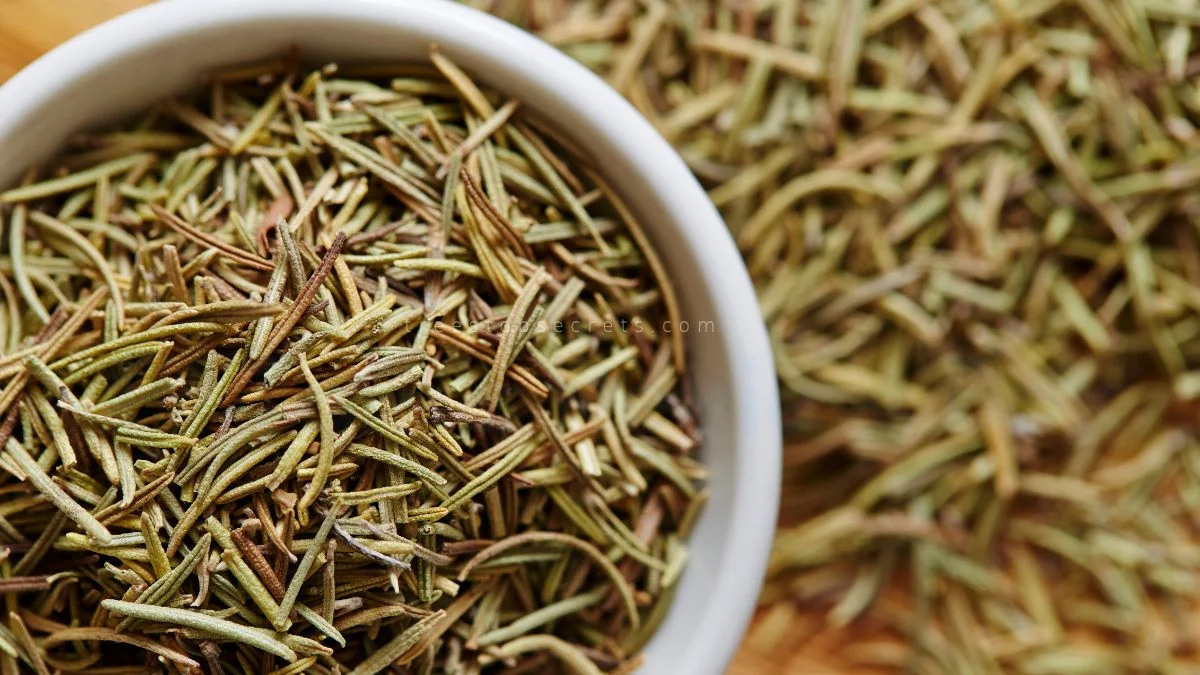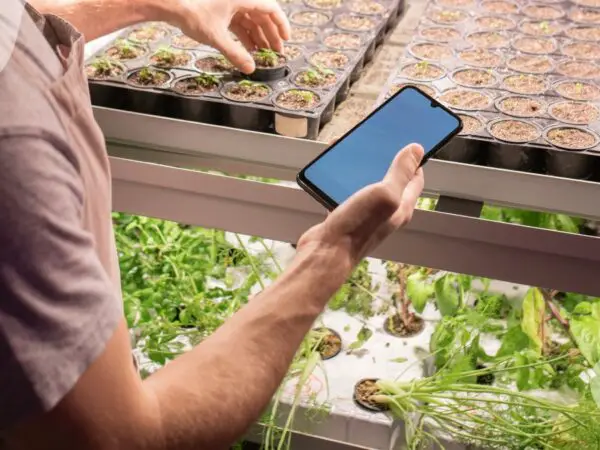Ever wondered how to preserve the fresh flavor of rosemary for longer in new recipes and food, or find ways to deal with tough stems? Looking to extend the life of your herb stash? Learn the simple steps to dry out rosemary at home effortlessly. Discover the best methods and tips to ensure your dried rosemary retains its aroma and taste, ready to enhance your culinary creations. Say goodbye to wilted herbs and hello to long-lasting rosemary goodness in your dishes, a great way to store leaves for recipes.
Key Takeaways
- Understand the importance of properly drying rosemary to preserve its flavor and aroma.
- Prepare rosemary by washing, drying, and removing excess moisture before drying.
- Choose between hanging, dehydrating, or baking methods for drying rosemary based on your preference and equipment.
- Follow a step-by-step guide to hanging rosemary for air-drying, ensuring good airflow and avoiding moisture buildup.
- Consider using a dehydrator for a quicker and more controlled drying process.
- Bake rosemary in the oven at a low temperature to dry it quickly while retaining its essential oils.
Understanding Rosemary Drying
Benefits of Drying
Drying rosemary preserves its freshness for extended periods, ensuring you have a supply for future culinary endeavors. The process also enhances the herb's flavor, making it more potent and aromatic. By drying rosemary, you can save money by avoiding unnecessary wastage.
Necessary Equipment
To dry rosemary, you only need basic kitchen tools like twine for bundling and baking sheets for spreading out the sprigs. There is no requirement for any specialized equipment to successfully dry rosemary at home. However, if you prefer a quicker drying process, a dehydrator can be used as an alternative method.
Key Ingredients
When drying rosemary, the primary ingredient needed is fresh rosemary sprigs. No additional ingredients are necessary in this process other than the herb itself, dry rosemary. It's essential to note that the quality of the rosemary used significantly impacts the final dried product's taste and aroma.
Preparing Rosemary for Drying
Cleaning Process
When drying rosemary, rinse the sprigs to remove any dirt or impurities that may be present. Pat dry the rosemary with paper towels to prevent mold growth during the drying process. Thorough cleaning is essential for achieving optimal results.
Sorting and Trimming
To prepare rosemary for drying, remove any damaged or discolored leaves from the sprigs. Trim tough stems to ensure uniform drying of the herb. sort the rosemary sprigs based on their freshness and overall quality.
Drying Techniques Overview
Hanging Method
When drying rosemary using the hanging method, tie rosemary sprigs together securely to prevent them from falling. Hang the bunch in a well-ventilated area to ensure proper airflow for drying. Remember to check regularly for any signs of mold or sun damage.
Dehydrating Method
For a faster drying process, opt for the dehydrating method. Spread rosemary evenly on trays within the dehydrator to ensure efficient dehydration. It is crucial to adjust the temperature settings based on the humidity levels in your environment.
Baking Method
The baking method offers quick results when drying rosemary. Simply lay out rosemary sprigs on a baking sheet for even heat distribution during drying. Keep a close eye on the process to prevent burning and ensure optimal results.
Step-by-Step Guide to Hanging Rosemary
Choosing Location
Select a dry, well-ventilated area for hanging rosemary sprigs. Avoid humid or damp spots that can hinder the drying process. Consider sunlight exposure for natural drying to enhance the herb's flavor.
Hanging Tips
Securely tie rosemary sprigs with twine to prevent them from falling during the drying process. Proper spacing between sprigs is crucial to ensure adequate air circulation. Opt for a dark location to preserve both the color and flavor of the rosemary.
Drying Time
Allow approximately 2 weeks when using the hanging method to dry out rosemary. If you opt for a dehydrator, it will take anywhere from 1 to 4 hours depending on the device's settings. Alternatively, using the baking method will require around 2 to 4 hours.
How to Dehydrate Rosemary
Dehydrator Setup
To dehydrate rosemary, arrange the sprigs on dehydrator trays evenly. Set the temperature between 95°F to 125°F for optimal drying. Check periodically to ensure even dehydration.
Dehydrating Time
Monitor the rosemary every hour in the dehydrator to prevent over-drying. Adjust the time based on humidity levels in your environment. The sprigs should feel brittle when fully dehydrated.
Checking Dryness
Test the dryness of rosemary by attempting to break a needle off a sprig. Look for brittle needles that fall off easily, indicating thorough dehydration. Ensure all sprigs are uniformly dry throughout.
Baking Rosemary in the Oven
Oven Preparation
To start drying rosemary in the oven, preheat it to the lowest temperature available. Next, line a baking sheet with parchment paper for easy cleaning. Then, space out the rosemary sprigs evenly on the sheet.
Baking Temperature
When baking rosemary, it is crucial to use low temperatures to avoid burning the herb. High heat should be avoided as it can lead to a bitter taste and loss of flavor. The key to successful drying is slow and gentle heating at low temperatures.
Monitoring Process
While drying rosemary in the oven, it's essential to keep a close eye on the process. Regularly check for any signs of burning or over-drying, which can affect the herb's quality. Adjust the temperature or drying time accordingly to ensure optimal results.
Post-Drying Process
Testing Dryness
After drying rosemary, perform a touch test to ensure it feels brittle and dry. Confirm that the needles detach easily from the stem, indicating thorough drying. To prevent mold growth, make sure there is no moisture remaining in the sprigs.
Storing Tips
When storing dried rosemary, opt for airtight containers to maintain freshness. Shield the herb from degradation by keeping it away from heat and sunlight exposure. To track freshness and potency, label containers with the date of storage.
Using Dried Rosemary
Culinary Uses
Dried rosemary adds depth to soups, stews, and marinades. Its intense flavor elevates dishes with just a small amount. Infuse oils or vinegars with dried rosemary to create aromatic bases for dressings or marinades. Enhance the flavors of roasted vegetables by sprinkling them with dried rosemary before baking.
Homemade Products
Create unique DIY herb blends by combining dried rosemary with other herbs like thyme and oregano. Make flavorful homemade seasoning salts by mixing dried rosemary with salt, pepper, and other spices. Craft delightful potpourri or sachets by adding dried rosemary to a mix of dried flowers and herbs for a fragrant touch.
Summary
In drying rosemary, you've learned the importance of proper preparation and various techniques like hanging, dehydrating, or oven drying. Post-drying, storing your rosemary in airtight containers in a cool, dark place will preserve its flavor for an extended period. Using dried rosemary in your cooking not only adds a burst of flavor but also ensures you have this versatile herb readily available whenever you need it.
Now that you're equipped with the knowledge to dry rosemary effectively, why not try out these methods yourself? Experiment with different techniques to find what works best for you and elevate your dishes with the intense aroma and taste of homemade dried rosemary. Happy drying!
Frequently Asked Questions
How long does it take to dry rosemary using the hanging method?
It typically takes around 1-2 weeks for rosemary to fully dry when using the hanging method. Ensure good air circulation and a dry environment for optimal results.
Can I use a microwave to dry out rosemary quickly?
Yes, you can use a microwave to quickly dry out rosemary. Place the rosemary sprigs between paper towels and microwave in short intervals until dried. Be cautious not to burn the herb.
What is the recommended temperature for baking rosemary in the oven?
Preheat your oven to a low temperature of around 200°F (93°C) when baking rosemary. This gentle heat helps preserve the flavor and aroma of the herb during the drying process.
How should I store dried rosemary for long-term use?
Store dried rosemary in an airtight container away from direct sunlight and moisture. Keep it in a cool, dark place like a pantry or cupboard. Proper storage helps maintain the herb's freshness and flavor.
Can I use dried rosemary in cooking directly, or should I crush it first?
You can use dried rosemary directly in your cooking without crushing it first. However, if you prefer a finer texture, you can crush or grind the dried rosemary before adding it to your dishes.
Image Source: Paid image from CANVA




